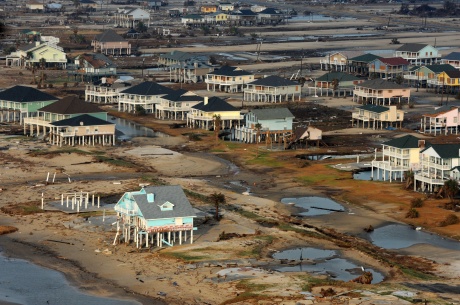By Michael B. Gerrard
This blog is based on a talk given to the Climate Change: Response and Resilience Leadership Forum at Columbia University on November 20, 2019, sponsored by RenaissanceRe.
We know that, mostly as a result of climate change, extreme weather events are becoming more frequent and severe. Reducing greenhouse gas emissions should be the highest priority, but that won’t be enough to prevent severe impacts, some of which are already occurring. Here are twelve ways the law can help society cope with these impacts.
- Flood maps – The Federal Emergency Management Agency should update its flood maps and make them reflect anticipated future climate conditions, not just past experience.
- Disclose flood risks – Prospective buyers of property should be given information about any flood risks faced by the property.
- Environmental impact assessments – Environmental reviews under the National Environmental Policy Act and its state counterparts should consider the climate conditions expected at the end of a project’s useful life, not just at the start, to help ensure the project can withstand those conditions.
- Public utility regulation – Other states should follow the lead of the New York Public Service Commission in requiring major utilities (in this case, Con Edison) to study expected future climate conditions going out decades, and prepare plans to cope with those conditions in order to maintain reliability.
- Permit conditions – Several statutes require permit holders to have and implement plans to prepare for extreme events – e.g., Clean Air Act; Clean Water Act; Oil Pollution Act; Resource Conservation and Recovery Act. The Conservation Law Foundation is pushing these requirements in lawsuits in Massachusetts and Rhode Island.
- Securities disclosure – As required (but not enforced) by the Securities and Exchange Commission, and as advanced by the Task Force on Climate-Related Financial Disclosures, public companies should disclose the physical risk to their facilities and operations from climate change.
- Heat – To cope with the dangerous heat conditions to come, cities should require landlords, including of public housing, to provide air conditioning or otherwise keep apartments cool enough to not endanger health. They should also require suitably-shaped roofs to be white, green, or topped with solar panels; and they should require large-scale tree planting.
- Building codes – Codes should require buildings to be designed and built so as to withstand anticipated flooding, wildfires, and other risks.
- Inspections – Flooding-vulnerable infrastructure such as levees and dams should be inspected frequently and repaired when needed.
- Toxic sites – The remediation of contaminated sites under the Comprehensive Environmental Response, Compensation and Liability Act and other programs should reflect future flood risk.
- Architects’ training – The states’ architects licensing boards should require architects to take continuing education courses on climate risks.
- Managed retreat – Though politically toxic almost everywhere, cities that are vulnerable to future extreme flooding should begin planning to retreat from shorelines and riverbanks that will become uninhabitable, and to relocate uses to safe areas.




